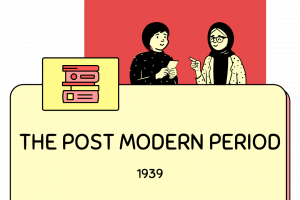This age is called Augustas Age because the writers of this period imitated the style and elegance of the writers who wrote in Italy during the reign of Emperor Augustus (27 B.C – 14 A.D). This span of time is also called the Age of Pope because Alexander Pope was the best-known poet of the
lime. During these years England was ruled by Queen Anne (1702-14), George I (1714-27), and George II (1727-60).
The Important facts which influenced the literature of this period are:
- Scotland was annexed to England.
- Jacobite rising continued.
- The first cabinet of England was formed.
- The first English daily newspaper, “The Daily Courant”, appeared in London in 1702.
- The number of coffee houses, pubs, and clubs multiplied and people learned the habit of living together.
- A number of literary associations started. Of them, the most famous was the Scriblerus Club. The members of this club were Alexander Pope, John Gay, John Arbuthnot, Jonathan Swift, and Thomas Parnell. The other clubs of this period were Kit-cat Club and the Spectator’s Club.
Table of Contents
Major Writers of the Period and Their Major Works:
Danie! Defoe (1659-1731):
Robinson Crusoe (1719)
Jonathan Swift (1667-1745):
The Battle of the Books (1704)
A Tale of a Tub (1704)
Gulliver’s Travels (1726)
Joseph Addison (1672-1719) and Sir Richard Steele (1672-1729):
The Tatler and The Spectator (1709-1712).
* Addison wrote 274 out of a total of 555 essays published in them and Steele wrote the rest.
Alexander Pope (1688-1744):
The Rape of the Lock (1712)
Dunciad (1728)
Epistle to Dr. Arbuthnot (1735)
An Essay on Criticism (1711)
Samuel Richardson (1689-1761):
Pamela or Virtue Rewarded (1740), the first English novel
Henry Fielding (1707-54):
Joseph Andrews (1742), a novel
Main Literary Features of the Age:
- Neo-classical spirit continues.
- Poetry becomes a visual as well as a verbal art following Horace’s theory “as in painting, so in poetry” (“Ut pictura poesis”).
- Precise, formal, and elegant become the standard style of writing.
- Moderation, realism, and rationalism become the main principles of creative works.
- The regular pentameter couplet and blank verse are developed to the best possible perfection.
- Lyric poetry loses dominance.
- The satirical verse continues.
- Satirical prose appears; it blends fact and fiction in new forms, such as biographies, travelogues, political allegories, and romantic tales.
- Novels and journalism begin.
- Translation of great classical texts continues.
- Wit or inventiveness, and aptness of descriptive images or metaphors become major literary devices.
- Literature mirrors political awareness.
- Urban culture overpowers literature.
